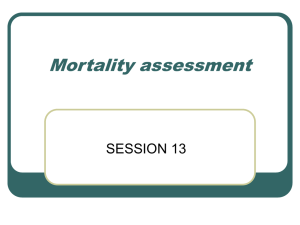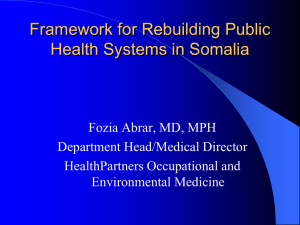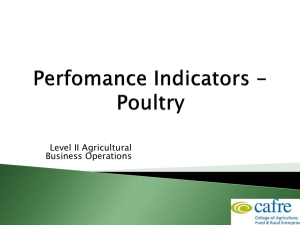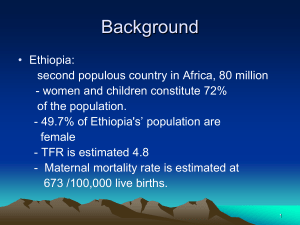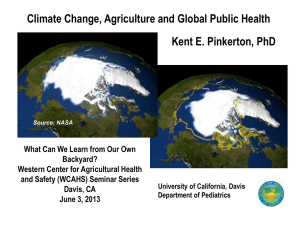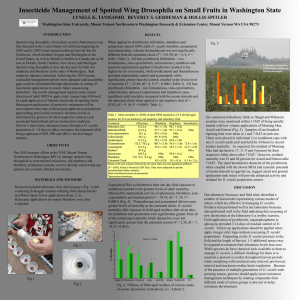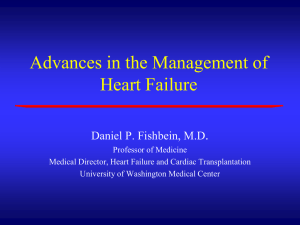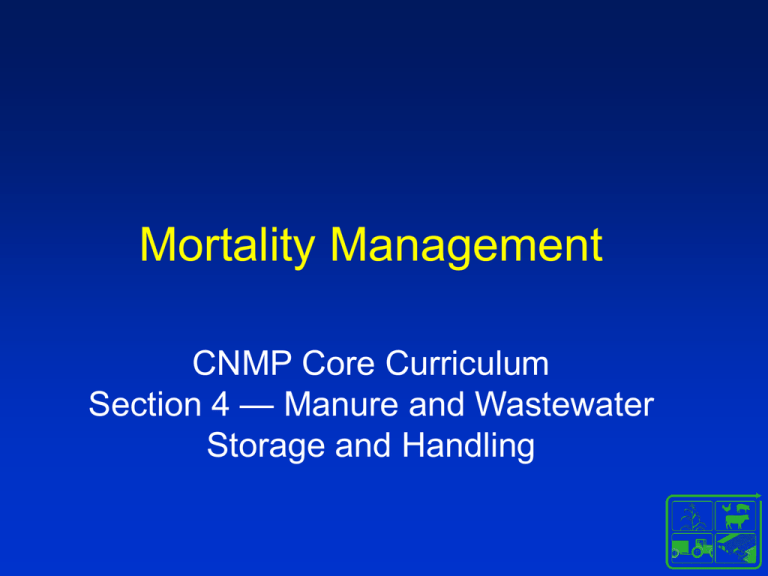
Mortality Management
CNMP Core Curriculum
Section 4 — Manure and Wastewater
Storage and Handling
CNMP Development
Core Training Curriculum
These course materials have been developed as a
cooperative effort between five land-grant universities
and The Natural Resources Conservation Service.
Copyright Information
Ames, Iowa 50011, (515) 294-4111.
Copyright © 1995-2006, Iowa State University
of Science and Technology. All rights reserved.
Objectives
• To gain proficiency in estimating daily
mortality rates, mass and volumes using
published values.
• To introduce several methods used for
mortality management.
Course Materials
• Required Materials
– NRCS Practice Standard, Animal Mortality
Facility (Code 316)
– Example CNMP
• Supplemental Resources
– Stettler, D. 2001. Mortality Management.
Lesson 51 - National Livestock and Poultry
Environmental Stewardship Curriculum.
Midwest Plan Service and US EPA.
Mortality Management
• When livestock dies before the
slaughterhouse
– the producer loses money two ways
• loses the meat-value of that animal
• the cost to dispose of that animal
• Therefore, producers don’t want to deal with
mortality
– it costs money
Planning for the Impossible...
• Natural disasters can happen
– Flooding (IA, 1993 & NC, 2000)
– Snow (Blizzard of 1993)
• millions of broilers and chicks lost to building
collapse and loss of power for heating
– Whole herds may be destroyed
• contagious diseases (FMD, TB, BSE)
• swine viruses and human flu viruses
Planning for the
“impossible”
Hurricane Floyd 1999
SE North Carolina
Prevention
Responding to tragedy
Prevention
Responding to tragedy
Mortality is a Waste
Management Issue
• A carcass is a concentrated source of
organic matter
– it is a source of odors
– it is a source of undesirable critters
– it is a potential source of pathogens
– it is a source of nutrients
• Thus, the mortality problems are similar to
manure problems
Mortality Management
• Manure management system is NOT the
mortality management system
– no dead hogs in the lagoon
• they will float as they bloat
– no dead birds in the litter spreader
• picnic for buzzards
• Law
– thou shall not leave dead animals exposed to
the environment
Mortality Management
• Daily losses
– Plan
– Structure
• Catastrophic losses
– Plan
Mortality Rates: Poultry
LPES 51, Appendix C
Mortality Rates: Swine
LPES 51, Appendix C
Mortality Rates: Cattle/Horses
LPES 51, Appendix C
Management Methods
•
•
•
•
•
Incineration
Composting
Rendering
On-site burial
Value-Added Processing
Incineration
• Cremation is a
controlled and
rapid oxidation
of organic
matter
– this is not coaloil, old tires and
a lit cigarette
– greatest utility is
for small
animals
Commercial Incinerators
•
•
•
•
Complete reduction of volume
Destroys pathogens
Oxidizes volatile gases (odors)
Expensive
– initial cost and energy cost
• Air permit issues
– incinerators with greater than 400,000 btu/hr
capacity require air quality permit
Air-Curtain Incinerators
Large quantities
Composting of Mortality
• Composting is a controlled, natural
process in which beneficial organisms
reduce and transform organic waste into a
predictable and useful end-product
– a good option for both large and small animals
– requires some labor and space
Basic Process
– Indigenous populations of bacterial and fungi
will start to decompose the organic matter
when conditions are favorable
• Moisture - not too wet and not too dry, about
55% moisture by weight
• aerobic if oxygen is available - creates the most
heat, the fastest degradation rate
• anaerobic if no oxygen available, very slow
• microbes will utilize the carbon and nitrogen and
reproduce
Composting Methods
• Bins
– material is transferred between bins as a
means of mixing
– common for poultry and baby pigs
• Passive Piles or Windrows
– natural movement of oxygen through the
bulking material
– with large animals, difficult to turn pile
• Mechanical
Composting Bins for Mortality
Disposal
• Volume is based on poundage of daily
losses
– if average 200 pounds of loss per day
• then need 200 cubic feet of primary is
recommended
• with 200 cubic feet of secondary
• Width and depth depends on equipment
– must be wider than your front-end loader
• typically 8-feet wide
Composting Bin
Bilsland Composter - Iowa
Bilsland Composter - Iowa
Large Scale Compost Bins
Mechanical Composter
Mortalities and carbon
material are added here
Finished Compost
tumbles out here
Passive Composter
Placing the Animal
Finished Carcass
Typically only large massive bones are
left identifiable after 6 weeks.
Goals
• Ratio of Carbon to Nitrogen
– 23 parts carbon to 1 part nitrogen
• Bulking material provides air space
– serves to provide oxygen
– serves absorb odors
• Fresh material should heat rapidly
– in 24 to 48 hours, should be greater than
120°F
Operating Procedure
• Primary heat cycle
– 10 to 14 days, as oxygen supply
decreases, temperature decreases
– monitor temperature with long-stem
thermometer
• Secondary heat cycle
– move to secondary bins for mixing and to
redistribute moisture
– 15 to 20 days of additional composting
Mortality Management by
Rendering
• Recycles the nutrients contained in the
dead animal
• Requires prompt transport to rendering
plant
– Transport within 72 hrs (24 hrs is better)
– Bio-security measures must be observed
Mortality Management by
Rendering
Alternatives to
prompt
transport
• Freezing
• Fermentation
Mortality Management by
Rendering
Advantages
• Conserves nutrients contained in the
dead animals
• Minimal capital investment unless
preservation is used
• Low maintenance
Mortality Management by
Rendering
Disadvantages
• Increases sanitary precautions to
prevent disease transmission
• Storage of animals is required until
pickup.
• Fees charged for pickup
• Rendering services may not be
available.
On-Site Preservation
Value-Added Possessing or Quality
Preservation
• This costs money - must be able to
get a return on this investment
– of course, not paying a fine is a return
• Maximizes the potential of receiving
money for deadstock rather than paying
to have it removed
On-Site Preservation
Value-Added Possessing or Quality
Preservation
• Refrigeration
– small animals, lot of electricity, works well
• Acid Preservation
– preserves nutrient content, inactivates pathogens,
acids are expensive and hazardous
• Fermentation
– anaerobic deterioration, limited by lactic acid
formation, pH ~ 4.5
– pickling
Livestock Burial
• The old standard
– large animals
– need a large area for a few burials
• Need better control for concentrated burials
Trench Method
• Convenient and inexpensive
– trench is opened, and then progressively
backfilled as carcasses are placed
– works best for small animals, broilers, chicks,
and baby pigs
• Problems
– frozen soils, mud, scavengers
Burial Pit
Surface water diverted
Manhole cover for lid
Aerobic Zone
Anaerobic Zone
Burial Pits
• Solid containment
– has solid walls and top
– prevents exposure to carcasses
– reduces the escape of odors
• Problems
– how to close the pit at end of useful life
– could be a point source
Final Thought
• Mortality is a cost, however, it must be
part of the overall production plan
• Everybody knows the smell of rotting
flesh
• Mortality management is not difficult
unless it is an afterthought
Questions??






